 Dear Aikido Community,
Dear Aikido Community,Archives for 2017
Introducing the USAF Donation Webpage
 Dear Aikido Community,
Dear Aikido Community,Training Partners in Aikido
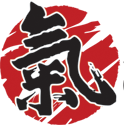 Training Partners in Aikido are so much about the exchange. Over the years, from brand new student, beginner, advanced beginner, middle kyu, Shodan and so on…my understanding of what to look for as well as how to choose has developed in a similar fashion to my technique, skill and my teaching ability. The first thing I have learned is when I am training with my partner, I am doing exactly that, training. I am not teaching. I am guiding or being guided. I am focusing on the connection with my partner, the movement, their ability, skill, and flexibility. Since those are all my focus, then my focus is not talking, speaking, verbalizing, stopping my partner, correcting my partner, or harming my partner. I know most of the partners I choose at seminars. I know many of these things prior to starting the technique. Because of this choice, the outcome for a positive exchange is high. How do you get to that point? Well, first, time is very important. Training with many people and building an internal rolodex of what people feel like when they train is key. How do they take ukemi and how do they throw? Are they very muscle-like? Do they over-grip? Do they talk a lot on the mat or in line during groups? I have been and always will be a ‘people watcher’. I am always watching the instructor during the technique, I am watching his/her uke. I am trying to duplicate both techniques. It is not just my own interpretation or what I feel like working on in my technique. Each lesson is unique and a fundamental difference is in any given Aikido class, the lesson of the class is set by the class instructor. I think that’s why Aikido is so important to me and why my love for this art is so strong. It’s also a very fair art for you are only as good as your last technique. Each time, the goal is to make that next one better. Same with ukemi. Each fall, each attack – better. More sincere, more relaxed, better connection – harmony. Finally, etiquette, no talking. Each class, less talking, more practice. I am constantly trying to work on that detail at seminars, too.
Training Partners in Aikido are so much about the exchange. Over the years, from brand new student, beginner, advanced beginner, middle kyu, Shodan and so on…my understanding of what to look for as well as how to choose has developed in a similar fashion to my technique, skill and my teaching ability. The first thing I have learned is when I am training with my partner, I am doing exactly that, training. I am not teaching. I am guiding or being guided. I am focusing on the connection with my partner, the movement, their ability, skill, and flexibility. Since those are all my focus, then my focus is not talking, speaking, verbalizing, stopping my partner, correcting my partner, or harming my partner. I know most of the partners I choose at seminars. I know many of these things prior to starting the technique. Because of this choice, the outcome for a positive exchange is high. How do you get to that point? Well, first, time is very important. Training with many people and building an internal rolodex of what people feel like when they train is key. How do they take ukemi and how do they throw? Are they very muscle-like? Do they over-grip? Do they talk a lot on the mat or in line during groups? I have been and always will be a ‘people watcher’. I am always watching the instructor during the technique, I am watching his/her uke. I am trying to duplicate both techniques. It is not just my own interpretation or what I feel like working on in my technique. Each lesson is unique and a fundamental difference is in any given Aikido class, the lesson of the class is set by the class instructor. I think that’s why Aikido is so important to me and why my love for this art is so strong. It’s also a very fair art for you are only as good as your last technique. Each time, the goal is to make that next one better. Same with ukemi. Each fall, each attack – better. More sincere, more relaxed, better connection – harmony. Finally, etiquette, no talking. Each class, less talking, more practice. I am constantly trying to work on that detail at seminars, too.
by Jonathan Weiner
Aikido of Charlotte
Reflex Control In Aikido
 An effective way of viewing Aikido is as a system of reflex control. Erik Riker and I have been studying reflex controls for the last few years. We first discovered structural reflexes by studying videos by Kanshu Sunadomari. I had been exposed to these earlier but did not understand how they worked. These are reflexes that organize our muscles so that our bodies can perform mechanically. These reflexes maintain a particular balance between muscles. We disrupt that balance. When the balance is disrupted Uke becomes weak. The Unbendable Arm exercise demonstrates this. In that exercise Nage disrupts Uke’s muscle balance in such a way that Uke’s body does not realize it is unbalanced and Uke becomes weak.
An effective way of viewing Aikido is as a system of reflex control. Erik Riker and I have been studying reflex controls for the last few years. We first discovered structural reflexes by studying videos by Kanshu Sunadomari. I had been exposed to these earlier but did not understand how they worked. These are reflexes that organize our muscles so that our bodies can perform mechanically. These reflexes maintain a particular balance between muscles. We disrupt that balance. When the balance is disrupted Uke becomes weak. The Unbendable Arm exercise demonstrates this. In that exercise Nage disrupts Uke’s muscle balance in such a way that Uke’s body does not realize it is unbalanced and Uke becomes weak.
We normally use these muscle imbalances to cause Uke to fall down. In this case Uke’s body will sense the imbalance and quickly correct. Because of this the technique must be applied at normal reflex speed. In Aikido we cause a rotation about the vertical axis of the torso and/or an arm rotation along with extending Uke out and then dropping Uke. Video’s of everything discussed here are in my YouTube channel, Survival Aikido. For example when executing Kote Gaeshi Nage might tenkan beside Uke and then step back pulling Uke’s arm. This rotates Uke about a vertical axis. The slight forearm rotation increases the muscle imbalance and Uke’s arm is slightly extended. Then Uke’s hand is taken to the floor causing Uke to fall. Done properly pain is not a factor. If pain is involved then Nage cannot determine the effectiveness of the reflex control.
We discovered the second reflex control in a different way. Much of our practice is with padded training weapons, particularly knives. Uke attacks with commitment and really tries to touch Nage with the training knife. This type training is too dangerous with a wooden tool so the padded tools are necessary. We determined that just pivoting out of the way as done in basic Aikido would not reliably prevent Nage from getting stabbed. This was true even when Uke did not know to which side Nage would move or what Nage would do.
The basic Irimi exercise where Uke raises the boken and attacks with Shomen Uchi while Nage enters with Tsuki has always bothered me. I reasoned that if Shomen Uchi can be so easily defeated then no one could use it. In spite of this Shomen Uchi has been used for thousands of years. I wanted to know the counter to Irimi. I found a video of Saito countering Irimi by raising his boken and then pivoting out of the way of the Tsuki. I thought this was phony because our experience was that pivoting out of the way would not work if Uke was alert. We tried the pivot as Saito had done and it did work. We knew we had just discovered something very important and started trying to understand what was happening.
A few months later a friend gave me the book, “Systema, No Contact Combat” by Vartan Mamiko, that explained the reflex. Humans have a grasping reflex. When we reach for something or strike at something a reflex takes over to complete the task and we lose most conscious control. This is a very primitive reflex that may be present in every species. Even the most primitive. This is why a bull fighter can redirect the bull to follow the cape rather than the matador’s body. The swordsman’s pivot works because the raised sword draws Nage’s attention and the Tsuki does not follow Uke’s body. O’Sensei shows this repeatedly in demonstrations. No Contact Systema uses this principle in a different way from O’Sensei. I think O’Sensei discovered this reflex as a general principle and it is a basis of his Aikido.
This is not fundamentally different than leading Uke when Uke reaches for Nage’s wrist. When Uke strikes at Nage with Tsuki, if Nage’s hand can grab Uke’s attention, then Nage can get the strike to follow Nage’s hand rather than Nage’s body. Now Nage is a Matador.
There are fairly strict requirements that must be met to get this to work. It is easy to do something that looks like the right thing but not get the necessary effect. This principle works best when Nage moves as Uke is at the distance we normally practice. Where Uke’s and Nage’s weapons do not quite touch. Once this principle is applied the basic Aikido exercises that seemed so impossible start working. The further we have gone with this the more convinced we have become that the exercises chosen for Aikido are mostly exercises that teach these reflex or mind control principles.
Controlling the reaching reflex is useful for circular attacks and grabbing attacks as well as Tsuki. If is much less interesting where Uke reaches for a wrist if Nage does not redirect the attack. For this reason those attacks do not show the tremendous power of the method. It is important to realize that until Uke attacks there is no reaching reflex to control. If Uke just stands there and does not strike there is nothing to lead. It is also important to note that once the punch finishes the reflex turns off and the mind control ends. A good Uke will then continue with another attack unless Nage has established another control. It should also be noted that controlling the striking reflex also breaks Uke’s structure activating the structural reflexes to Nage’s advantage.
The third category of reflexes that are important are defensive reflexes. We have experimented extensively with the startle reflex. In the startle reflex Nage threatens Uke. This causes Uke to take defensive action that Nage can use against Uke. This also disrupts Uke’s structure. We find the defensive reflexes most useful in freestyle when we are close to Uke. This would be more like a Karate fighting distance. This happens frequently because the second Uke tries to get Nage while the first Uke is being thrown.
Controlling both the striking and defending reflexes involves getting Uke’s attention so both involve reaching towards Uke’s face. This means that Nage can always start the same way giving the same initial response. The three reflexes discussed here are fundamental to the Aikido practiced by O’Sensei. Once aware of the reflex controls it is obvious what O’Sensei is doing. There are other reflexes we are studying but these give a good start to learning reflex control. Controlling these reflexes makes Aikido an exercise in mind control.
by John Kilpatrick, Okolona Aikido
Notes from Camp
 At my first USAF Summer Camp, I have a singular experience. Instructors create a groundwork of training, and elicit spiritual development on a collective level. As fellow practitioners, we initiate each other with hard skill but exude tenderness. I bring back both learning and a bond of presence to my home dojo. Here I share impressions of the merciful correction I received.
At my first USAF Summer Camp, I have a singular experience. Instructors create a groundwork of training, and elicit spiritual development on a collective level. As fellow practitioners, we initiate each other with hard skill but exude tenderness. I bring back both learning and a bond of presence to my home dojo. Here I share impressions of the merciful correction I received.
Every day is an in-depth exploration of a basic technique. Without stopping, each instructor begins with a rote movement and unwinds its mental cords, examining them, and tying them together in a novel way. This is refreshing and expansive to me, as I strive to maintain an athletic pace and rebuild my functional basis. The assortment and volume of classes each day give me remarkable possibilities, if I can only keep up! Utmost exertion with complete surrender to development of the art is an exhilarating feeling.
My background emphasizes ukemi and weapons proficiency, but I benefit by focusing on fundamentals, on reasons for body positioning and how to move with finality in a small amount of space. I know well that movement originates from weapon form, yet to see it permeate every mechanism and have it reinforced on a daily level is eye-opening.
Execution and reception of each movement is a demonstraton in spiritual growth. With each arc of an iriminage or kotegaeshi, openings close and with forceful tenchinage uke demonstrates how to meet one’s end. However, real progress is hand-to-hand: in a safe structure, we sharpen each other by mutually striking, taking layers of rigidity from our partner. We sweat together, polish each other, and heal one another’s hearts.
A diverse and well-trained community informs and corrects me. At dinner and in the hallway, I find fellows to scrutinize discrepancies in technique and consider fine points of attack and response. Many women are quite strict about solid form and stance. To resist those who are bigger and stronger, I better know what I’m doing. There is also a strong Senior Citizen cohort with decades of experience to reconstruct my concept of Aikido. I also feel the joy of an intense weapons interaction where my partner strikes boldly as a gentleman and I reply with ladylike composure.
The teachers are examples of dignity. Awe-inspiring and controlled, they stride across the mat and command attention with every movement. They choose ukes who broaden my view of who qualifies as a human; I feel my heart expanding with each new demonstration. The teachers give of themselves so liberally yet amazingly still draw breath at the end of class, although it is obvious they are enjoying themselves.
On the mat, our movement as an organic whole is almost transcendent. As a flock of sparrows with a single leader, we launch into motion at a single bow from our instructor; turning in a circular path of technique—traveling, changing, returning and resting in seiza, with hearts singing that we are alive. The 6:30 a.m. class for me is like attending a heartfelt worship service. It feels as if we are passing through another world.
I am within a tapestry of support, I feel well taken care of by a healthy community. My roommate, a sandan, allows me space to “do my own thing” but supports me well when accomplishing tasks I can’t do myself, such as understanding weapons education structure, or a Monday night trip to the laundromat! A teacher also challenges the way I absorb attacks and elevates my sincerity of correction in daily life, making me stronger and more fluent in the art. I see familiar instructors and fellow martial artists, gathered for the purpose of personal development with spiritual fruition. It seems like a family reunion!
Though the resort is accommodating, I miss my home dojo. I am absorbed in the collective spirit, but I feel drawn to my beginning. I depart with intent and a response to enrich our practice, and a threshed heart to help us rediscover our place in a great multitude of seekers. Aikido educates me to integrate the value of each human as we contribute to existence. I feel encircled by timeless methods and renewed by kind discipline, and hope to bear these gifts into the world.
by Natalie Konrad, Old City Aikido
Those Days…
 How was your day? It’s almost as generic a question as “How are you?” but it’s nonetheless an important question. It can be answered with “good,” “okay,” or “bad” (or with other more detailed answers). The same is true for “How was your (Aikido) class?” The answers to these questions differ day-to-day, and class-to-class. These differences are important since a lot can be learned from the varying experiences of your different days and classes. A truly good day feels significantly better right after a horridly bad day. A day of novelty brings new excitement after a long series of routine days. We may go through several days with little memory of them because they are just so ordinary, but that doesn’t mean they aren’t important. They add up and one day we may look back on them with a feeling of nostalgia. Something that may not seem important today may be exponentially more important a year from now. Something that is urgent now may seem so irrelevant in the future. The contrasting days of our lives give us a series of mental tableaus to enrich our experience of this world.
How was your day? It’s almost as generic a question as “How are you?” but it’s nonetheless an important question. It can be answered with “good,” “okay,” or “bad” (or with other more detailed answers). The same is true for “How was your (Aikido) class?” The answers to these questions differ day-to-day, and class-to-class. These differences are important since a lot can be learned from the varying experiences of your different days and classes. A truly good day feels significantly better right after a horridly bad day. A day of novelty brings new excitement after a long series of routine days. We may go through several days with little memory of them because they are just so ordinary, but that doesn’t mean they aren’t important. They add up and one day we may look back on them with a feeling of nostalgia. Something that may not seem important today may be exponentially more important a year from now. Something that is urgent now may seem so irrelevant in the future. The contrasting days of our lives give us a series of mental tableaus to enrich our experience of this world.
You wake up full of energy and find that you have time to make (or buy) a hearty breakfast for yourself. After a tasty and filling breakfast you decide to commute to the dojo for practice. As you walk down the street all of the traffic lights seem to turn green for you as you get to the crosswalks, and just as you get to the subway station your train pulls in right away. You make two subway transfers and those trains just happen to arrive right away for you as well. When you get to the dojo and start your practice you wind up training with an amazing partner who is soft, flowing, and a wonderful uke. It’s a day where everything goes right for you and you are singing on the inside (and for some people the outside too). Later as you walk down the street the wind blows a twenty dollar bill right in front of you (this actually happened to me once). A romantic interest also starts to show some interest in you. Of course a great day is different for each individual and also depends on the stage of life each person is in. These are the days where you feel like you can do anything. They may not happen that often, and sometimes may even be just part of a day, but they just feel so rewarding and rejuvenating, especially after experiencing their polar opposite.
You barely got any sleep last night and your obnoxious alarm is already telling you to get up. You hit the snooze button and before you know it an hour has passed and you realize you’ve overslept. You leave your home in a rush with no time for breakfast. As you walk down the street you see red lights all the way and wait out each one. The train leaves just as you get to the subway station. You tried to rush for it but the doors closed right in front of you before you can make it in. You manage to take the next train, but midway through your trip that train stalls and is delayed for half an hour. While waiting for your train to move a disheveled person spouting nonsense walks into your train car. This apparently crazy person singles you out and bombards you with obscene words. When you eventually finish your train rides, just as you get out of the station, a downpour starts and you didn’t bring an umbrella. You get soaked. You arrive at the dojo half an hour late for class (the instructor was gracious enough to let you on the mat after your harrowing commute). You partner up with the spare person on the mat, but your nose notices that he seems to have neglected to wash his gi. Your partner stiffens up and tries to resist you at every turn, and when it’s his turn to throw he uses all the might he can muster. After that horribly draining practice, as you head home, you check your pockets and notice that your keys are missing. It’s like you are the embodiment of Murphy’s Law. Despite all you went through you survived and know that at least some of the days to come will be better. Just making it through a day like that is something you can be proud of. Anyone can breeze through a good day, but if you manage to slog through a terrible day and keep you head held up high (maybe not on the same day), your character may just have that much more depth to it. To stay centered while everything is falling apart around you; that is a true test of Aikido.
You wake up at the usual time with an okay amount of energy. You have your usual quick and simple breakfast. As you walk down the street, some lights are red and some are green as you get to the crosswalks. You wait a reasonable time for your train to arrive. Your Aikido practice was okay, but things are starting to feel monotonous. You feel like you’ve hit a plateau. The structure of routine keeps you going as you maintain your practice, but you feel like you need some new energy and inspiration in it. We’ve all had that feeling of just going through the motions. Maybe we need a major change in our lives, or maybe just a spark of novelty to reignite the flame of the great things we already have. It’s different for each individual. But deep down you know what you need to do even if the specifics are blurry. Sometimes we do an Aikido technique and feel like we’re doing something wrong. We can’t seem to pinpoint exactly what it is, but something just feels off. Eventually we may figure out that needed adjustment, but until we do it’s important to keep moving. Keep the practice moving and the adjustments will come with time. If we stop and over-analyze we get stuck. Feel it out in the motion. We may take several wrong turns before even having a glimpse of the right path for us, but it’s important to have those mistakes. I remember taking an exam in college where I got most of the answers right, but there was this one question I just couldn’t get. I thought about it for a long time before finally submitting the wrong answer. Later on when I looked up the right answer it stuck with me. I’ve forgotten all the answers I got right on that test, but I still remember the correct answer to the question I got wrong even after several years.
Each life is made up of days. Each day is made up of moments. Those moments of elation would not be possible without the moments of frustration. We need the bad moments to truly appreciate the good moments. Without that contrast everything would just be neutral. We need the routine days to make the eventful days that much more special. It’s the same with our Aikido practice. By dealing with a good variety of different people, we learn to adjust ourselves in different ways. We feel out the motions that are most efficient for our personal styles of movement. What may work well with one uke may be totally inefficient with another uke. As we figure out our techniques with movements, we figure out our lives with moments.
By Andrew Lee, New York Aikikai
Just A Little More
 There’s a point in the technique where you can feel uke’s weight or resistance. You think you can’t go any further and feel as though uke has stopped you there in the middle of your movement. However it just so happens you are training with a sempai who directs you to move a little further to make the technique more effective. Sometimes just a little extra extension is all it takes. You were trying to be relaxed while doing the technique, but in fact made some parts of your body dead weight instead. There is a big difference between being relaxed and being limp. You can still be relaxed while having energy extend throughout your movements. That added energy is just the bit you need to extend upward for that Kokyuho or create a sharper cut down for that Ikkyo. When you’re at a point where you feel like you’ve hit a dead end, give it a little more energy and see where that takes you.
There’s a point in the technique where you can feel uke’s weight or resistance. You think you can’t go any further and feel as though uke has stopped you there in the middle of your movement. However it just so happens you are training with a sempai who directs you to move a little further to make the technique more effective. Sometimes just a little extra extension is all it takes. You were trying to be relaxed while doing the technique, but in fact made some parts of your body dead weight instead. There is a big difference between being relaxed and being limp. You can still be relaxed while having energy extend throughout your movements. That added energy is just the bit you need to extend upward for that Kokyuho or create a sharper cut down for that Ikkyo. When you’re at a point where you feel like you’ve hit a dead end, give it a little more energy and see where that takes you.
How far is your reach? There’s a $100 dollar bill hanging just a centimeter beyond your answer. Now, how far is your reach? We can often do more than we believe we are capable of (unless you’re one of those people with exceedingly high levels of confidence). Under the right circumstances and pressures we may see capabilities come out that we never knew we had. With the right motivation we find that extra bit of energy within ourselves to tip the scales in our favor. This doesn’t mean that we over-exert ourselves though. I often see people putting too much “effort” into their techniques. They put all their might into a throw and they get exhausted quickly. Meanwhile, the uke at the receiving end of their brutal efforts grimaces and would most likely avoid training with them in the future. Putting more energy into your movements is more subtle and precise than the brute force maximum “effort” approach. It’s adding some energy and extension while cutting with the edge of your hand, instead of using all your muscles to push through someone.
On my commute to the dojo delays on the subway happen every so often. Sometimes a train is delayed at a station indefinitely leaving passengers with no idea of when it will start moving again. It could be 5 minutes; it could be half an hour. When my train is delayed at a station where a transfer is available I think to myself of whether to wait out the delay, or to transfer to another train that may take slightly longer to get to my destination. There are those times where a minute after I exit the train to transfer, the train closes its doors and starts moving again. If I had just waited an extra minute I would have gotten to my destination sooner. The reverse can also happen where I stay on the delayed train too long, and transferring would have gotten me where I needed to go on time. Do I move a bit sooner, or wait a little longer? Timing is important in Aikido, and luckily it is easier to feel that out than how how long a train will be delayed for. As we train more we get a better sense of when to move to create the right distance between us and our partners. And as we learn to feel out better timing we start to understand where subtle changes need to be implemented to improve our technique and movement. Stepping out just a second (or less) sooner can make a significant difference. But if you step out too soon uke can track you with their attack. Sometimes an extra second of patience can be the key instead.
There are many different types of effort. There’s inefficient effort that just exhausts you without really getting you anywhere. There’s efficient effort that helps you steadily move towards your goals. Then there’s effort of intention that shows other people you care. Things like simply being present in someone else’s life can convey a lot of intention of care. Different people approach this kind of effort of intention in different ways. For the more gregarious types it may be enthusiastic conversation; for others it may be more subtle. It’s kind of ironic that I’m writing about this since I’ve never been good at showing effort of intention. I often come across as cold to others and don’t talk much to most people. But I see the effort of intention other people show me, even if it doesn’t look like I acknowledge it. Some people take a while to warm up.
You bring someone a cup of hot tea on a cold day, but that person doesn’t want it so it gets cold. For the next few days you try again, but the same thing happens; the tea gets cold. You keep trying though since it doesn’t really inconvenience you and you’re getting drinks for other people too. After thirty days of seeing that cold cup of tea each day, you think maybe tomorrow I’ll order one less cup of tea, but you decide to give it one more try. On the thirty-first day you find an empty cup, a smile, and a thank you. (Disclaimer: This story is for metaphor purposes only. I am in no way suggesting to buy tea for someone who doesn’t want it for thirty-one days straight). Some people may never warm up to you, because certain people just don’t connect well due to incompatibilities in personalities or worldviews (or other reasons), but sometimes chipping away with bits of effort of intention over an extended period of time can go a long way.
Whether it’s reaching or cutting that extra inch, moving a second sooner, waiting a second longer, or just adding that bit of extra effort that shows you care; a little extra energy along with some subtle changes can make a big difference. A strong intention doesn’t always guarantee results, but sometimes it’s the tipping point. For every grounded and heavy uke there is a weak spot. Find that spot, put some energy and intention towards it, and uke’s balance will come tumbling down. That extra bit of initiative or patience can bring surprising results. People don’t expect a lot from a little, but many little things add up and the simplest changes can open up a whole new world of possibilities.
By Andrew Lee, New York Aikikai
Just Saying Hello….
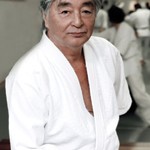 It has been many months since I wrote an article to the Aikido community, and that is actually good news because I have been back to my busy schedule traveling and teaching all over the world. I am happy to be taking these few days at my own dojo because right after USAF summer camp I traveled immediately to camp in Germany, and I leave soon for a trip to Brazil, Argentina and Chile. So it’s always nice to be home, no matter how short! I would like to thank everyone who came to camp this year, both Osawa Sensei and I had wonderful week.
It has been many months since I wrote an article to the Aikido community, and that is actually good news because I have been back to my busy schedule traveling and teaching all over the world. I am happy to be taking these few days at my own dojo because right after USAF summer camp I traveled immediately to camp in Germany, and I leave soon for a trip to Brazil, Argentina and Chile. So it’s always nice to be home, no matter how short! I would like to thank everyone who came to camp this year, both Osawa Sensei and I had wonderful week.
There are many instructors connected with New York Aikikai in the tri-state area who have been running their own dojos for a long time, even decades. It was an unusually busy spring for me as well because in addition to my international seminars, several of these nearby dojos had anniversary seminars. So while I was absent from even more of my usual Saturday classes at NYA, I was happy to be included in these celebration seminars and see so many instructors in their own dojos surrounded by wonderful students.
So, this is all to say that I am doing well, and I look look forward to seeing you soon, somewhere, on the mat.
Have a wonderful fall season,
Y. Yamada
Dan Promotions January 2, 2017 – May 31, 2017
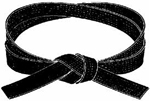 Test applications received and dated between January 2nd 2017 and May 31st, 2017 (some listings represent applications prior to Hombu approval, applications not received by posting date will not be listed in the post).
Test applications received and dated between January 2nd 2017 and May 31st, 2017 (some listings represent applications prior to Hombu approval, applications not received by posting date will not be listed in the post).
Shodan
- Ralph Akin – Two Rivers Aikikai
- Beverly Baker – Aikido de la Montagne
- Bernard Becker – PAPA Aikido USA
- Anthony Bentley – Springfield Aikido School
- Guerman Ermolenko – Albany Aikido
- Micahel Ettore – Twin Cities Aikido Center
- Michelle Farris – Columbia Aikikai
- Jone Gaunavou – San Francisco Aikikai
- Matthew Gentile – Albany Aikido
- Benjamin Goliwas – Asheville Aikikai
- Kevin Johnston – Aikido Center of Jacksonville
- Ulugbek Kasimou – Open Sky Aikikai
- Stephen Koehler – Twin Cities Aikido Center
- Jason Koonce – Heaven and Earth Aikido
- John Lai – San Francisco Aikikai
- Lance Luria – Springfield Aikido School
- Chris Mangos – Shodokan
- James Matheny – Jonesboro Aikido
- Mary Moutoux – Open Sky Aikikai
- Carmen Narvaez – Albany Aikido
- Michael Nilan – Twin Cities Aikido Center
- Donald Nollet – Twin Cities Aikido Center
- Terrence O’Grady – Aikido of Nassau County
- Robert Paluszek – Heaven and Earth Aikido
- Wiley Patterson – Alamo Area Aikikai
- Louis Pingitore – New England Aikikai
- Grant Price – Aikido of El Paso
- Brandon Rout – Jonesboror Aikido
- Bill Querry – Portland Aikido
- Stuart See – Albany Aikido
- Dario Valcarcel – Southern Maryland Aikido Center
- Michael Weiss – Aikido of Champlain Valley
- Donovan White – Albany Aikido
- Eric Yanofsky – Shodokan
Nidan
- Faisal Ahmed – Albany Aikido
- Don Eisele – Tatsumaki Aikikai/KSU Aikido Club
- Ken Fung – City Aikido of Los Angeles
- Basia Halliop – Toronto Aikikai
- Lawrence Howard – Albany Aikido
- Kaitlyn Hunter – North Vancouver Aikikai
- Chris Ingham – Bermuda Aikikai
- Dwi Jaya – Toronto Aikikai
- Kim John-Banks – Bermuda Aikikai
- Amos Kennedy – Aikido Center of Atlanta
- Allen Kline – Framingham Aikikai
- Andrew Konopacki – Albany Aikido
- Catherine Lefebvre – Aikido de la Montagne
- Michelle Lefkowitz – Aikido of Champlain Valley
- Jason Martell – Lunenburg Aikikai
- Xavier Matute – Monteregie Aikikai
- Nicholas Mills – Lunenburg Aikikai
- Matt Moller – Springfield Aikido School
- Philip Natale – Albany Aikido
- Ezzard Neri – Toronto Aikikai
- Suzanne Rancourt – Albany Aikido
- James Reed-Jones – Aikido of Prince Edward Island
- Patrick Roux – Seattle Aikikai
- Scott Somero – Portland Aikido
- Jerry Vejar – City Aikido of Los Angeles
Sandan
- Jeremy Akel – Aikido Center of Jacksonville
- Jonathan Aronson – Albany Aikido
- Linda Cox – Albany Aikido
- Stefan Dromlewicz – Framingham Aikikai
- Stephen Fay – Kingston Aikido
- Jorge Garcia – Aikido of Austin
- Shawn Kim – Plano Aikido Center
- Damien Kick – Austin Aikikai
- Paul Miroff – Kingston Aikido
- Alan Moores – Aikido of Pahala
- Daniel Top – Seattle Aikikai
- Tom Visentin – Kingston Aikido
- Thomas Voetsch – Kingston Aikido
Yondan
- Daniel Almosny – Florida Aikikai
- James Baptiste – Bermuda Aikikai
- Alexandra Hamer – Open Sky Aikikai
- Daryl Muranaka – Harvard Aikikai
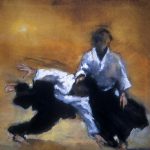 Harvey Konigsberg was born in New York City in 1940. He studied painting at New York University and the University of Miami. In 1965, he began studying Aikido with Yamada Sensei at the New York Aikikai. He devoted himself equally to the disciplines of painting and Aikido. In 1987, he founded Woodstock Aikido and continues to serve as chief instructor. He is currently a seventh degree black belt and a Shihan, master instructor. Over the years, his paintings have been exhibited in 22 one-man shows in New York City and in numerous national exhibitions. Hand-signed, limited edition archival prints, as well as t-shirts featuring his aikido art work, are available for sale at his online store,
Harvey Konigsberg was born in New York City in 1940. He studied painting at New York University and the University of Miami. In 1965, he began studying Aikido with Yamada Sensei at the New York Aikikai. He devoted himself equally to the disciplines of painting and Aikido. In 1987, he founded Woodstock Aikido and continues to serve as chief instructor. He is currently a seventh degree black belt and a Shihan, master instructor. Over the years, his paintings have been exhibited in 22 one-man shows in New York City and in numerous national exhibitions. Hand-signed, limited edition archival prints, as well as t-shirts featuring his aikido art work, are available for sale at his online store, 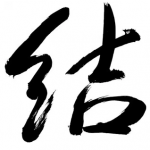 A soft shuffle of barefoot students draws attention to the peaceful silence soon to envelop the practice space we call Dojo. As if by magic, the wave of people dressed in white uniforms find their spots as they slowly line-up in a sitting position called Seiza. And in a moment, all time seems to pause. Like breath, this is a suspension of thoughts, a way to call back one’s mental activity to the present moment and the space which one occupies. In this moment of recollection, all becomes unified. The state of calm ensues and invites new learning. Oftentimes announced by a clap, then another, then a third, the line of students bow, synchronized by an inner rhythm acquired through the practice of awareness and presence. Thus, practice begins.
A soft shuffle of barefoot students draws attention to the peaceful silence soon to envelop the practice space we call Dojo. As if by magic, the wave of people dressed in white uniforms find their spots as they slowly line-up in a sitting position called Seiza. And in a moment, all time seems to pause. Like breath, this is a suspension of thoughts, a way to call back one’s mental activity to the present moment and the space which one occupies. In this moment of recollection, all becomes unified. The state of calm ensues and invites new learning. Oftentimes announced by a clap, then another, then a third, the line of students bow, synchronized by an inner rhythm acquired through the practice of awareness and presence. Thus, practice begins.